Staying for 3 days in Athens, Greece gives you plenty of time to see the main attractions like the Acropolis, Plaka, and Temple of Olympian Zeus. You'll also be able to squeeze in a side-trip or two to attractions outside the city.
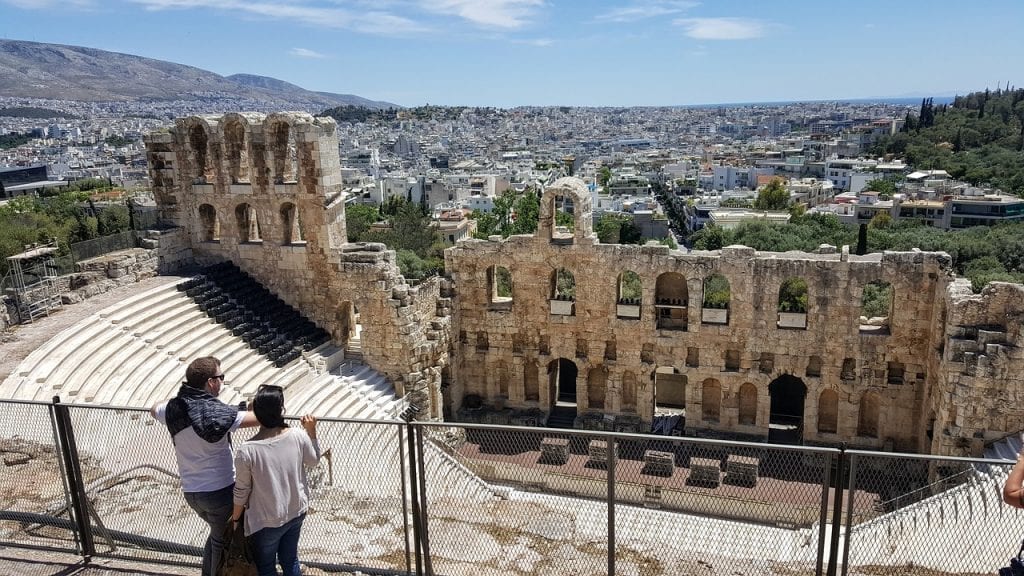
My Athens 3 day itinerary is a comprehensive guide to the most historic city in Europe. See all the main highlights and explore ancient and contemporary Athens in 3 days the easy way!
Is 3 days in Athens too much?
How long do you need to ‘see' a city? It's impossible to answer. Especially when Athens, the city in question, has a history going back thousands of years!
In the end, most people are limited by the time they have available. If you are flexible with your time though. why not take a look at my dedicated guide to how long to spend in Athens before deciding?
Overall, I feel that 3 days in Athens is a great amount of time to visit the ancient ruins, and get to know the city better. You also have the opportunity to take a side trip to Delphi if you want.
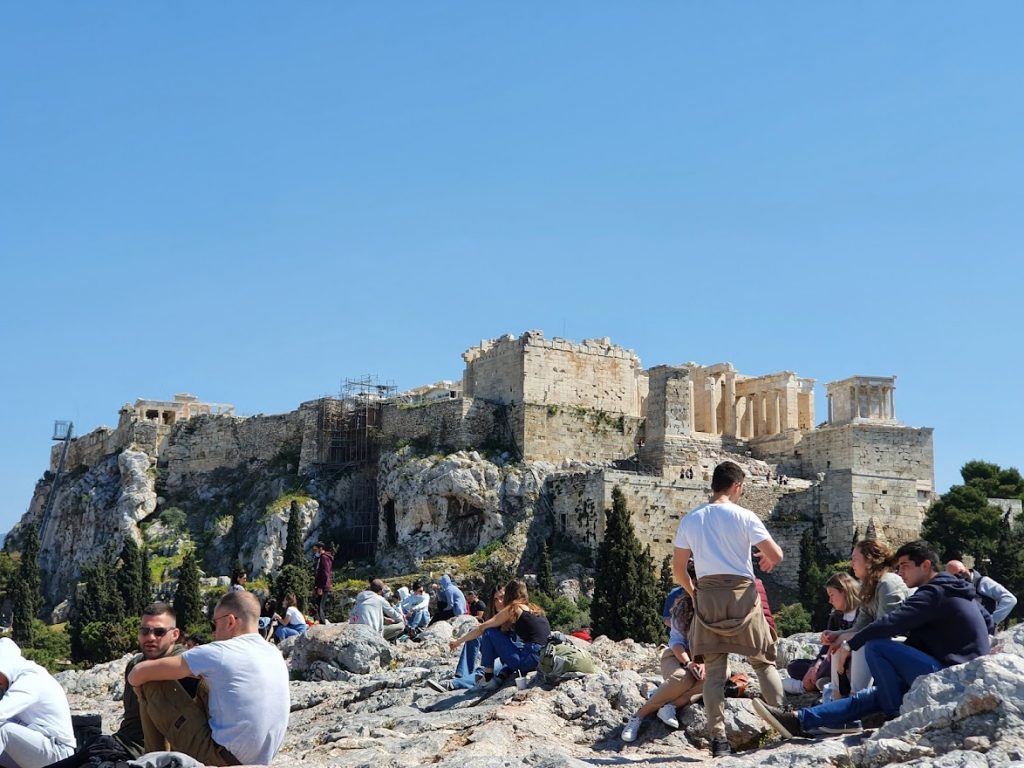
Planning 3 days in Athens
So, I've designed this Athens 3 day itinerary in a way that helps you see the most of the city.
You'll get to see all the main highlights as well as a few contemporary treasures to give you a taste of both ancient and modern Athens.
If you’re thinking to include a visit to Athens as part of a bigger vacation in Greece that involves island hopping, my suggestion is to leave Athens until the end of the trip. The reason for this, is if there are any ferry delays or cancellations you won’t miss your flight home!
An alternative, is to split your 3 days in Athens into two sections, a little at the beginning, and a little at the end.
How this three day Athens itinerary works
I've been living in Greece for over eight years now, writing about numerous places to see and things to do in Athens. After showing friends and family around the city, I developed several Athens sightseeing itineraries.
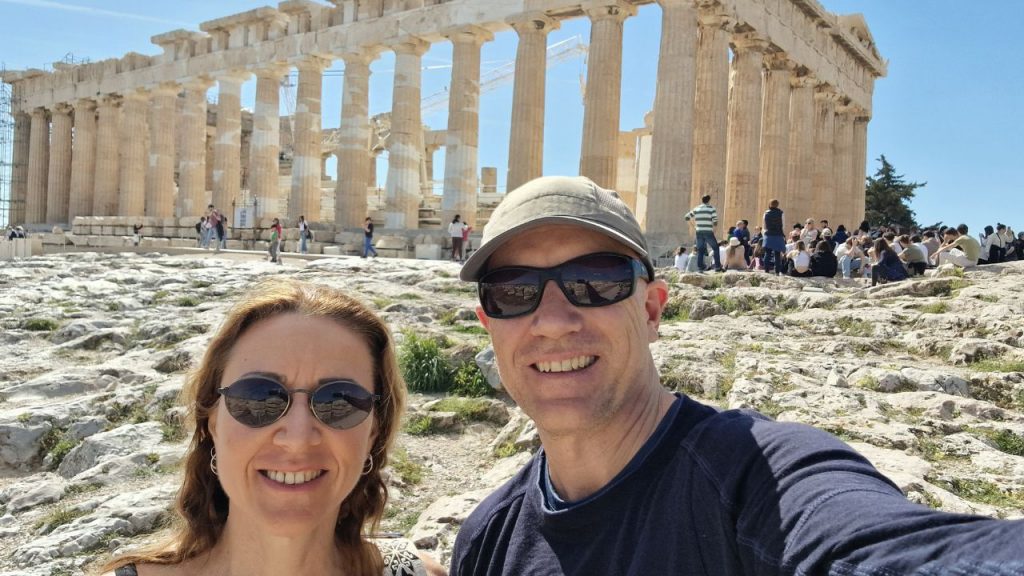
These Athens itineraries are realistic, practical, and combine my local knowledge with what I know visitors will want to see.
Each of the three days in Athens starts off with a section called ‘what to expect'. This gives you a brief summary of the day's events.
After this, there's also a short section called ‘itinerary notes'. In this paragraph there are notes concerning how you might choose to adapt the Athens itinerary depending on time of year or personal interests.
Finally, there's a suggested order for the day's events with more extensive notes. Each day in Athens uses the suggested summer season order for sightseeing.
This is quite a long post, so you may find the table of contents listed underneath useful to jump directly to sections that appeal to you the most.
Athens 3 Day Itinerary
This Athens travel guide features a full 3 day itinerary. The Athens must do list includes:
DAY 1 IN ATHENS OVERVIEW AND ITINERARY NOTES
- Suggested order for winter Day 1 Athens
- Suggested order for summer Day 1 Athens
- Hadrian’s Gate
- Temple Of Olympian Zeus
- Areopagitou Street
- Filopappou Hill
- Areopagus Hill
- Ancient Agora
- Lunch in Monastiraki
- The Acropolis Museum
- Visit The Acropolis And The Parthenon
- Visiting the Acropolis in summer
- Visiting the Acropolis in winter
- Plaka And Dinner in Athens
Day 1 in Athens – Overview And Itinerary
What to expect: On your first day in Athens, familiarize yourself with the centre of the city. Visit some of the most important monuments and sites, like the Acropolis and the Ancient Agora.
Take a stroll on one of Athens’ most picturesque pedestrian streets, Areopagitou Street, and walk up and down Filopappou and Areopagus hills for amazing views of the Acropolis.
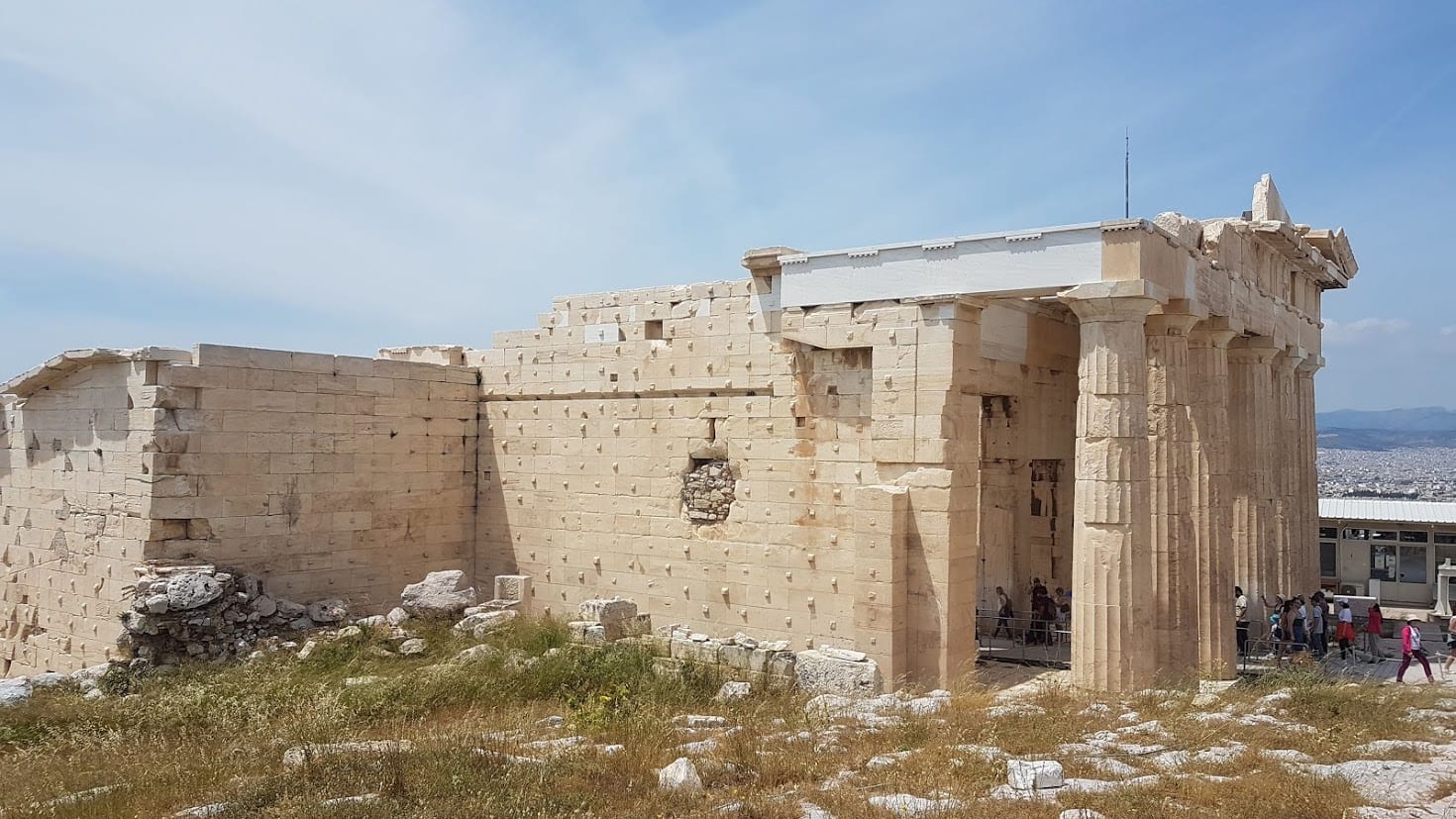
Itinerary Notes: In my opinion, the time of the year and weather conditions can help shape your itinerary while in Athens. With this in mind, I would totally recommend keeping the Acropolis and the Acropolis Museum as the last activity of your day if you are in Athens during the summer.
At the same time, if you visit Athens in winter you can go to the Acropolis early and finish with the Ancient Agora.
Obviously these are just my suggestions, and you can follow the winter itinerary in summer, but you will probably find that the Acropolis gets too crowded in the morning and too hot in the afternoon.
Suggested order for winter Day 1 Athens
- Hadrian’s Gate and then Temple of Olympian Zeus
- Acropolis
- Acropolis Museum
- Walk on Areopagitou Street
- Filopappou Hill
- Lunch off Areopagitou Street
- Areopagus Hill
- Ancient Agora
- Dinner around Monastiraki square area
Suggested order for summer Day 1 Athens
- Hadrian’s Gate / Temple of Olympian Zeus
- Walk on Areopagitou Street
- Filopappou Hill
- Areopagus Hill
- Ancient Agora
- Lunch around Monastiraki area
- Acropolis
- Acropolis Museum
- Dinner around Acropolis area
In general, the ancient monuments are normally open from 8.00 – 17.00 in winter months, and from 8.00 – 20.00 in summer months – but check before you visit, especially for the months of April and October.
As the summer months are far more popular with visitors, here's the summer Athens itinerary day 1.
1. Hadrian’s Gate
If you are in Athens for 3 days, it’s best to stay in a hotel which is close to the Acropolis, as you can then walk to most of the tourist attractions.
** Take a look here for hotels near the Acropolis. **
Assuming that you are, it's time to step outside the front door and get started!
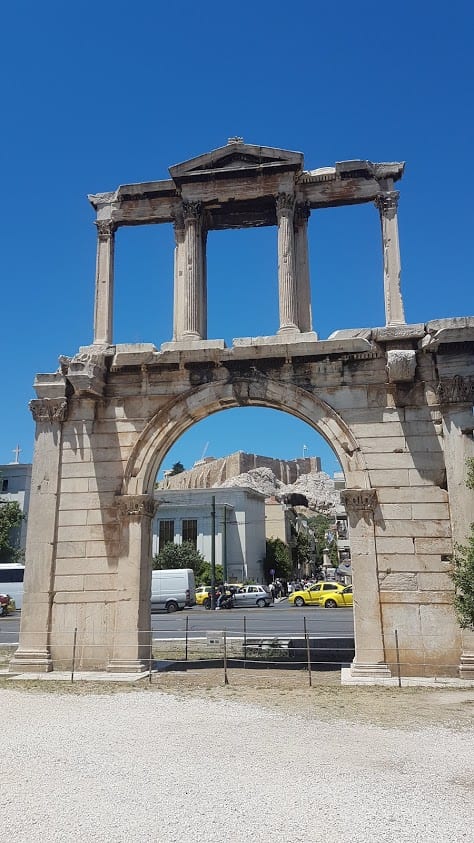
After breakfast, check out Hadrian’s Gate for a quick photo opportunity. Also known as Hadrian's Arch, it was built in honour of the Roman Emperor Hadrian and marked the line between the more ancient part of Athens and Hadrian's newer city.
If you get the right angle, you can also see the Acropolis along one of the side streets. You don't need to hang around here too long – probably five minutes will do most people.
2. Temple Of Olympian Zeus
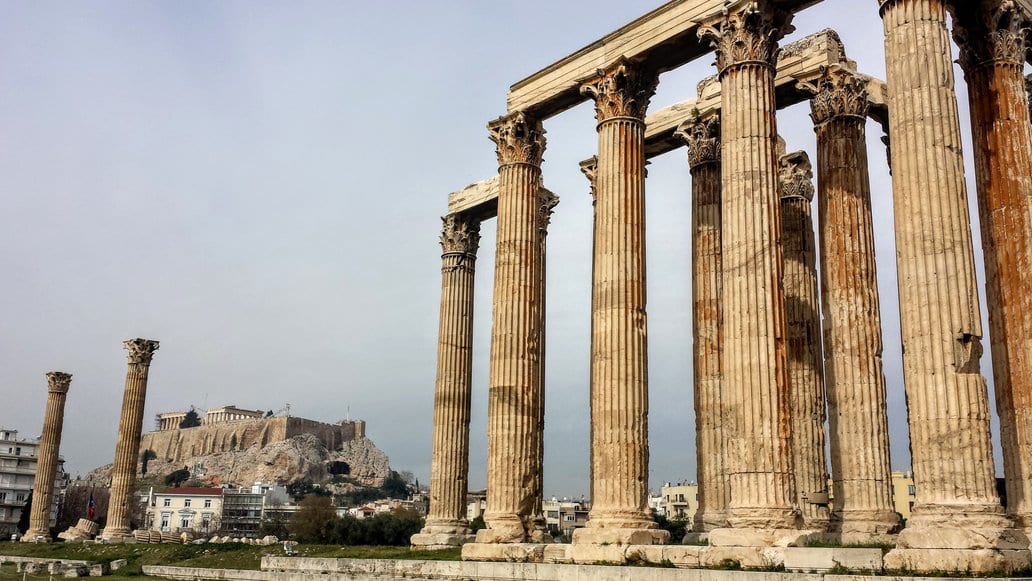
Proceed on to visit the impressive Temple of Olympian Zeus which is just behind Hadrian's Gate. This magnificent structure is one of the biggest ancient temples in the whole of Greece.
The huge columns of the Temple of Zeus in Athens are a wonder to behold, and there are also great views where you can get both the Temple and the Acropolis in the same photo.
How long you spend at these ancient ruins is up to you, but I'd say to allow 20-30 minutes.
Note – The reason you should visit the Temple of Olympian Zeus first, is that it is here where it’s best to buy a combined ticket for many archaeological sites in Athens without having to queue for too long.
The combined ticket costs 30 euro in summer months (April to October), and 15 euro in winter months (November to March). There are discounts available for children, students and seniors, so check if you qualify.
3. Areopagitou Street
Head back to Hadrian's Gate, cross the road, and you'll find yourself at the start of a pedestrianised street. You may find signs pointing to the Acropolis Museum – you won't be heading there now, but later in the day.

Areopagitou Street was pedestrianised just before the Olympic Games in 2004, and is one of my favourite places to walk in Athens. As you walk along, you'll see the Acropolis on your right hand side so there will be plenty of photo opportunities!
Heading towards Thisseio metro station, you will see plenty of buskers and artisans, but also locals and tourists strolling up and down the street.
4. Filopappou Hill
You will soon see a large green area, called Filoppapou (or Philopappou) Hill, on your left hand side. If you want to walk to the top and back, allow about an hour.
From up the hill, you can get great views of the Acropolis, especially if you go up to Filopappos monument. Although it’s not signposted, you can’t miss it – it’s a tall monument at the highest point of the hill.
If you are tempted to walk up Philopappos Hill in the evening, keep in mind there have been some reports of theft in recent years. If you decide to go, be vigilant and avoid having valuables with you.
5. Areopagus Hill

As you keep walking on Areopagitou Street, you will reach a point where the street changes name to Apostolou Pavlou. Turn right there, and you will soon reach another spot with great views of the Acropolis – Areopagus, or Areios Pagos.
This was the court of justice in Ancient Greece, and also the spot where Apostle Paul talked about Christianity in 51 AD.
The Areios Pagos is really a big rock, or a very small hill, and going up will only take you a couple of minutes. As such, it is often quite crowded with locals and tourists alike. Feel free to bring drinks and snacks, and spend some time here admiring the view.
As you continue strolling on Areopagitou Street, you will see that there are plenty of cafés, restaurants and snack bars around, so there are plenty of opportunities for a break.
6. Ancient Agora

If you are in Athens for 3 days, one of the must-see places is the Ancient Agora and the Museum. An area that has been largely excavated after the 1930s, the Agora was the commercial, social and political centre of Ancient Athens.
You will need at least a couple of hours to see this archaeological site in Athens city centre properly.
Among the highlights are the ancient temple of Hephaestos, the best preserved temple in Greece, the Byzantine churches, and the Agora Museum / Stoa of Attalos. However, even just walking around the Agora is a highlight in itself.
I've got a deep dive guide here for more reading – Visiting the Ancient Agora of Athens.
7. Lunch in Monastiraki
It's been quite a morning, so time for lunch! Greek cuisine is amazing, and best enjoyed at a leisurely pace. The chances are if you are visiting Athens for three days in the summer you'll want a time out in the shade in any case!
Walk by the Roman Agora (and pop into the small site for 10 minutes if you bought the combined ticket) and head to Monastiraki flea market.

Near Monastiraki market, one of my favourite places in the area is Athinaikon restaurant on Mitropoleos street – very clean, and good sized portions. Nearby Ergon Athens is also very good.
After lunch, you can stop by Hadrian's Library if you have the combined ticket (15 minutes max), and then decide between visiting the Acropolis or the Acropolis Museum first.
Top tip: If it's still hot outside (remember temperatures in August in Athens can reach over 40 degrees!), head to the museum first. If not, head to the Acropolis.
8. The Acropolis Museum
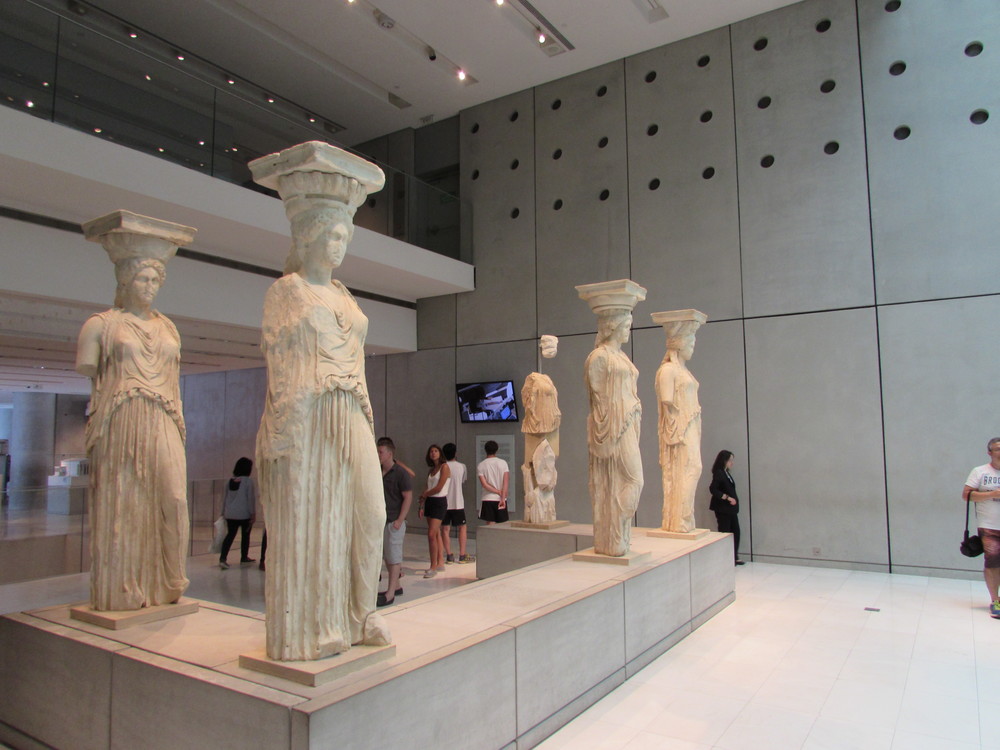
It might not be my favourite museum in Athens, but the Acropolis Museum is very popular with visitors, especially as it’s very close to the Acropolis and therefore they can both be visited in a few hours.
The air-condition is quite strong too, so if you are here in summer it will be a nice break from the hot weather. Do not miss the 6-minute video projection explaining the history of the Parthenon.
Allow at least an hour and a half at the Acropolis museum, or more if you want to visit the café / restaurant with great views of the Acropolis.
Tip for the ladies – Some of the floors in the Acropolis Museum are made of glass, so you might prefer to avoid wearing a mini skirt!
Related Post: Athens Museum List
9. Visit The Acropolis And The Parthenon

Definitely the best known ancient site in Greece, the Acropolis is one of those monuments that you simply cannot miss when you visit Athens.
It is classed as a UNESCO World Heritage site, and its famous buildings and temples include the Parthenon, Erechtheion, Propylaea, Temple of Athena Nike, Odeon of Herodes Atticus, and Theatre of Dionysus Eleuthereus among others.
This was the heart of the ancient city of Athens, and its only when experiencing it you realise how advanced Greek culture was, and its importance as the birthplace of Western civilization.
You can spend as much time as you want up on the Acropolis hill, but in general one and a half hours is about enough to appreciate the Parthenon and all the other temples in the complex, and take in the views of Athens.
In order to appreciate better the history of the ancient site, try to read up before you visit. Alternatively, you might want to get a guided tour of the Acropolis.
Visiting the Acropolis in summer
As the Acropolis is on top of a hill, it gets quite hot during summer, especially from June to August. Furthermore, large groups of tourists arrive every morning – many of them are visiting Athens on a cruise, and come straight from Pireaus port, where they only stop for a few hours.

My suggestion if you are in Athens in summer is to visit the Acropolis in the evening, after 17.30, when the majority of the tourist groups have left, and the temperature starts cooling down.
Visiting the Acropolis in winter
If you are in Athens in winter, chances are that there won’t be too many tourists and the temperature will generally be fine, so you could visit the Acropolis at any time of the day.
Avoid going up with rain, as the stairs get quite slippery. Remember that opening hours are shorter in winter, so make sure you have arrived there by 15.00 at the latest.
10. Anafiotika, Plaka And Dinner in Athens
Just underneath the Acropolis is a curious area known as Anafiotika. It is thought the name is linked with the people of the island of Anafi who were said to have built the area.
Walking through Anafiotika, you can't help but feel like you've stepped onto a Greek island! The white-washed walls and narrow alleyway really make you feel like you're in the Cyclades.
You've almost reached the end of the day, so it's the perfect time to visit one of the most charming areas in Athens. The famous Plaka area has lovely neoclassical buildings and an abundance of places to eat, as well as souvenir shops.

You can easily walk around the whole area in less than an hour, though you are very likely to get lost and go round in circles – I still do!
Despite the unavoidable touristy vibe, Plaka has some good little tavernas, like Damigos Bakaliarakia on Kidathinaion 41 (for fish).
Nearby Scholarhio on Tripodon 14 is also an interesting choice, as they bring several dishes on a big tray and you can choose the ones you like. If you prefer a slightly busier vibe, try getting a table (or perhaps a seat on the stairs) at Yasemi on Mnisikleous street.
At the same time, if you are too tired to wander around Plaka, there are good options for dinner wherever you are. Places around the Acropolis area often cater for tourist crowds, as you would expect, but the quality tends to be high nevertheless.
I totally recommend Mani Mani on Falirou 10 – not the most budget restaurant in the area, but it’s great food and is constantly rated very highly on Greek food forums.
Day 2 in Athens – Overview And Itinerary
What to expect: On your second day in Athens, start by observing the changing of the Guards in front of the Parliament, then walk through the National Gardens to visit the Panathenaic Stadium.
Depending on your interests, you can visit one or maybe two museums out of the many that Athens has to offer.
Itinerary Notes: Athens has over 70 museums, and most of them are worth visiting. The biggest one is the National Archaeological Museum, which could take a good four hours to see and is included in the third day’s itinerary.
A good option if you don’t want to spend half a day inside a museum, is the Benaki Museum, which gives a good overview of Greece’s very long history.
Alternatively, if you want to focus on a specific period of time, you can visit the Museum of Cycladic Art or the Byzantine – Christian Museum instead.
Suggested order for Day 2 in Athens
- Syntagma Square / Parliament
- National Gardens
- Panathenaic Stadium
- One museum
- Cable car to Lycabettus Hill
- Panepistimiou trilogy
- Ermou Street
- Dinner in Agias Eirinis Square
Syntagma Square And The Parliament
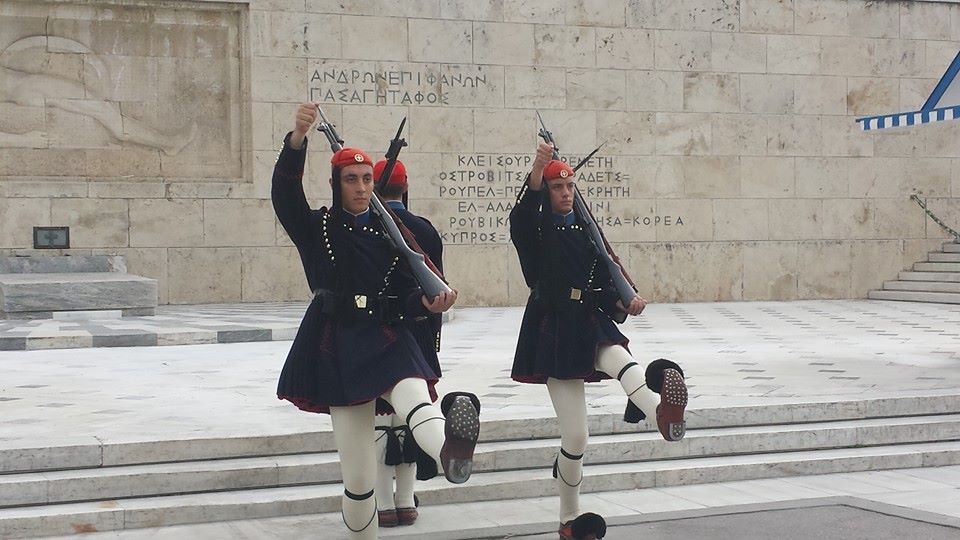
If you don’t mind an early start, try to get to the Parliament just before 8am, so you can see the changing of the Guards. Don't worry if you miss it, as there's one on the hour, every hour.
If it’s a Sunday, there is a bigger, more ceremonial Changing of the Guards at 11am. Make sure to get there by 10.30-10.40 so you can get a decent view.
The guards themselves are known as Evzones, and guard the Tomb of the Unknown Soldier. They stand perfectly motionless for an hour at a time, when they then change with the next set of guards.
The Change of the Guards in Athens takes place just in front of the Parliament. Originally the Palace of King Otto, this beautiful neoclassical building is now home to the Parliament of Greece.
It is actually possible to visit, but you need to book well in advance and unless you speak Greek you won’t really appreciate it much.
The National Gardens
From the Parliament, walk through the National Gardens, heading towards Zappeion and the Panathenaic Stadium. The design of the National Gardens was originally overviewed by Queen Amalia herself, and some of the trees are hundreds of years old.
This is one of the relatively few green areas in central Athens, and you are likely to see locals strolling along, or even jogging. There is also a small area with grim cages, where a few birds are kept.
Panathenaic Stadium
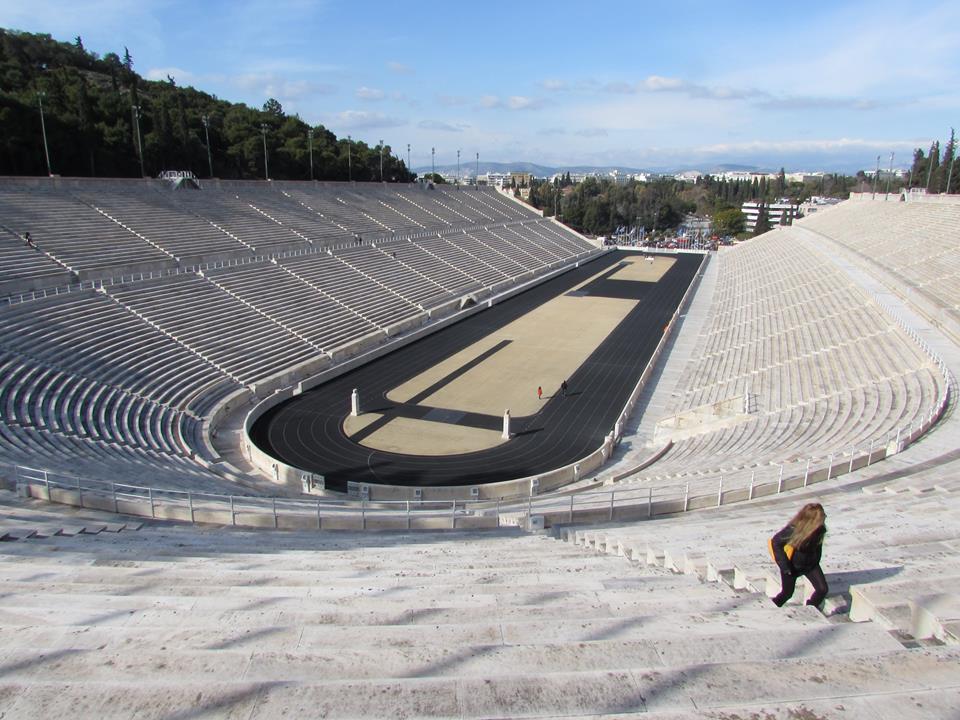
This impressive stadium was originally constructed in the 4th century BC, and was later restored to host the first modern Olympic Games, which took place in 1896.
Nowadays the Panathenaic is used for concerts and other events, but can also be visited during daytime. Until you are inside the Stadium, you won’t be able to appreciate its size – it is really huge! Make sure you also visit the small but informative museum section.
Note that entrance to the Stadium is not included in the combined ticket of the Acropolis and other sites. You can read more here about the Panathenaic Stadium in Athens.
Lunch in Kolonaki area
After visiting the Panathenaic Stadium, take a taxi to upmarket Kolonaki area, one of the nicest areas of central Athens. You can stop at Kolonaki square and have a coffee or light meal at the famous Da Capo café, which is great for people watching.
If you are interested in shopping, this area is good to explore though prices are generally higher than in other areas in Athens.
Museums in Athens – Your Choice
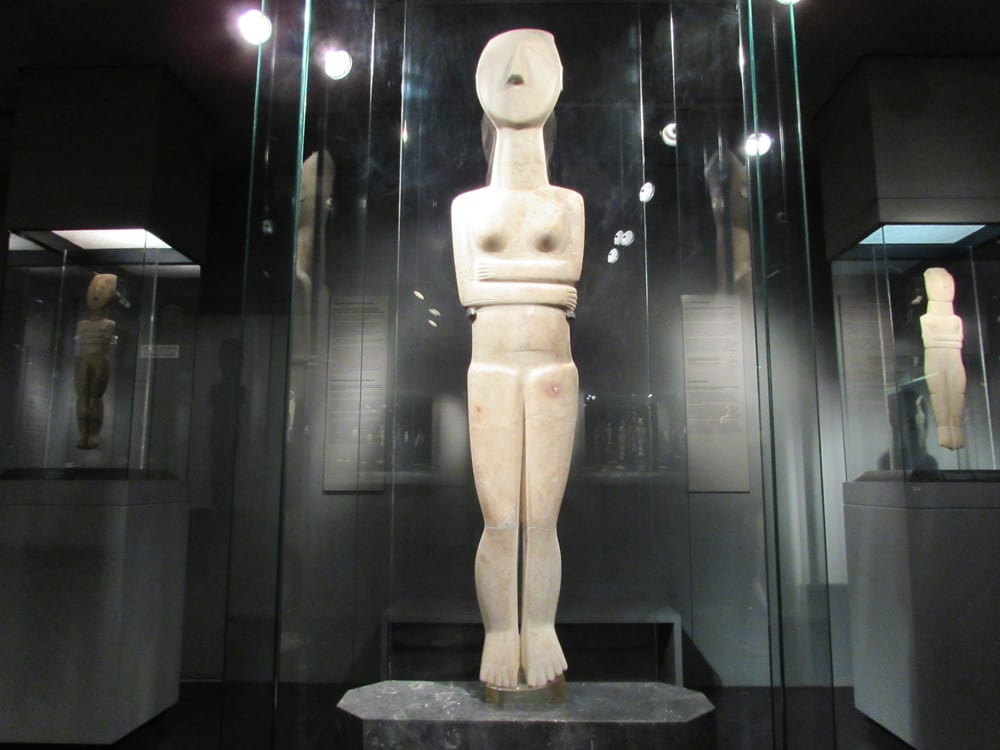
As mentioned earlier, Athens has over 70 museums, of which the large majority are well-kept and worth visiting.
While some people would run from one museum to the next, I would generally recommend visiting one museum a day, and have time to reflect on what you saw – then again, the choice is yours.
Based on my own visits, I would recommend one of the following four museums in Athens. These are all within a five minute walk of one another, and set you up nicely for continuing the Athens sightseeing itinerary for the day.
Benaki Museum – Summarizes the history of Greece with carefully selected artefacts. If you are planning to go to the National Archaeological Museum on day 3, it’s probably best to skip the Benaki. Read more here – Benaki Museum.
Museum of Cycladic Art – An excellent museum on the Cycladic civilization and ancient Greek art, including a really interesting section on life in Ancient Greece. Read more here – Cycladic Art Museum Athens.
Byzantine and Christian Museum – Focuses on the Byzantine history of Greece, largely unknown to most visitors. It is really well laid out, and very informative. Read more here – Byzantine Museum in Athens.
War Museum – Greece has a long history of wars, and this museum gives a good overview of the most recent ones. Read more here – Athens War Museum.
Cable Car to Lycabettus Hill
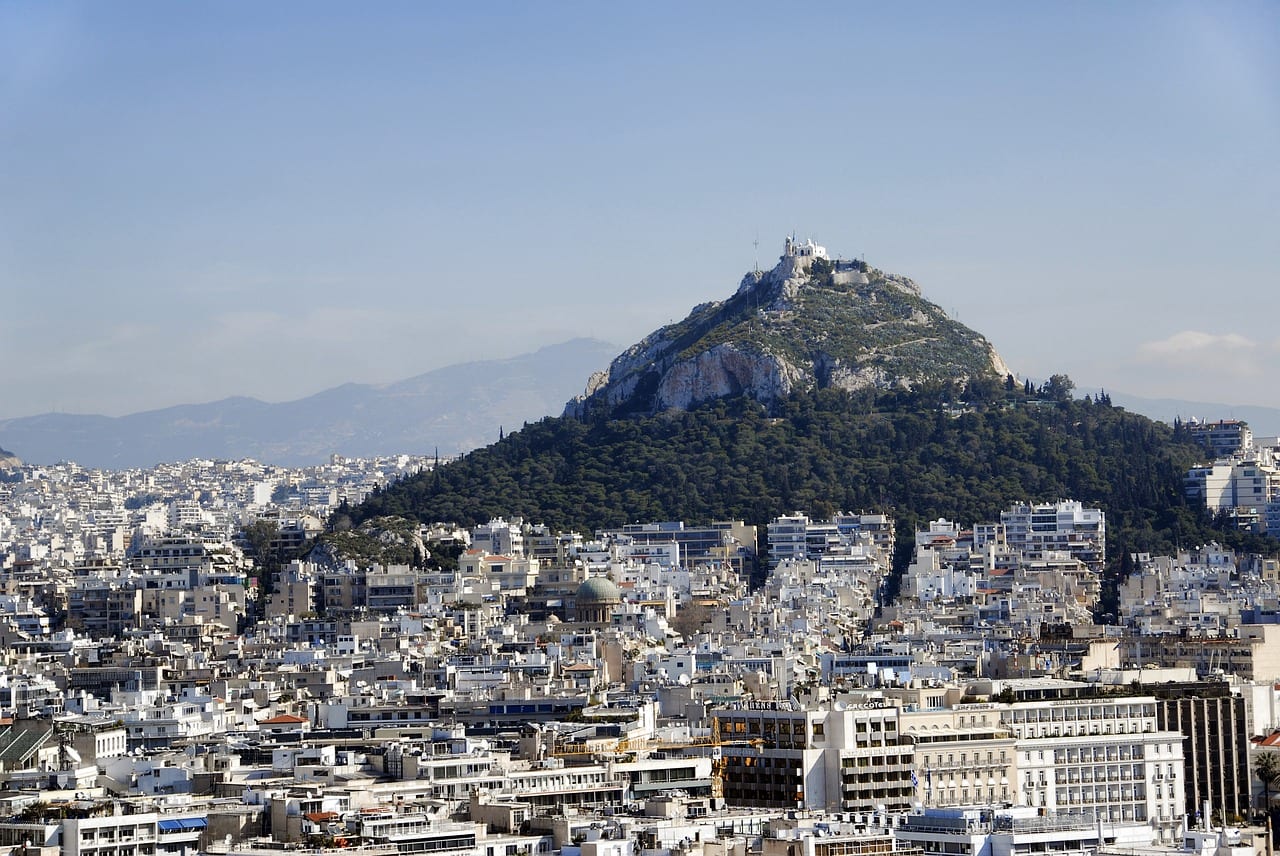
Time for some more views! If the weather is pleasant and you are not tired, you can hike up Lycabettus Hill, or Likavittos in Greek. It takes about a half hour, and it’s not super steep, so anyone with reasonable levels of fitness can easily walk up.
However, if you are tired or just lazy, you can take a taxi or the cable car from Aristippou street. This will drop you off very close to the highest point of Lycabettus. Many people choose to go here for sunset, but any time of the day is actually pretty cool.
Panepistimiou Trilogy
Coming down from Lycabettus Hill, walk towards Panepistimio metro. Just outside the entrance, you will see three neoclassical buildings – the Library, the Athens University and the Academia of Athens.

These superb buildings were designed in the mid-1800s by the Danish architects Hans Christian Hansen and Theophil Hansen, and completed with the aid of various donations.
They are among the few neoclassical buildings that still remain intact in Athens. Unfortunately they are not open to the public, but you can still admire them from the outside.
Ermou Street
Leaving the Trilogy behind, you can now walk back to Syntagma metro in the city center, and head down Ermou Street, a buzzing pedestrian street lined up with clothes and shoe stores.
This is one of the busiest commercial streets in Athens. There are plenty of shops on the side streets around Ermou as well, but many of them are closed on Monday, Wednesday and Saturday evenings, and all day Sunday – that’s Greece!
Dinner in Athens
For dinner, you can head to hip Agias Eirinis square. This is one of the areas where new restaurants and bars open every now and then – I’ve found that Melilotos has had good quality on a pretty constant basis but it’s also popular so you might not be able to find a table.
There are also many nice bars around, like Noel or Baba Au Rum. If you prefer something more alternative, check out Booze bar – there is often an exhibition on the top or bottom floor, and you might also notice people playing chess.
Day 3 in Athens – Overview And Itinerary
What to expect: On your last day in Athens, it’s worth spending a couple of hours in the morning to explore the food market in Athens, see some street art in Psirri area, check out Monastiraki market and visit Kerameikos ancient site and museum.
Itinerary Notes: In the afternoon / evening, you have two choices. You can either immerse yourself in Greek history, by visiting the National Archaeological Museum, or take a half-day trip to the Temple of Poseidon in Sounion.
My suggestion is to play it by ear depending on weather and time of year – while the Temple of Poseidon is pretty spectacular, it’s over an hour out of Athens by car, and the whole experience will take you 4-4.5 hours.
Suggested order for Day 3 in Athens
Option 1
- Central food Market
- Psirri area and street art
- Monastiraki Market
- Keramikos cemetery – Museum
- Gazi area
- National Archaeological Museum
- Exarhia area
Option 2
- Central food Market
- Psirri area and street art
- Monastiraki Market
- Keramikos cemetery – Museum
- Gazi area
- Half-day trip to the Temple of Poseidon at Sounio
I've listed option 1 as the suggest itinerary for day three in Athens below. If you want to find out more about the Temple of Poseidon trip, take a look here – Temple of Poseidon at Cape Sounion.
Central Food Market Athens

The Varvakios Central Food Market in Athens is on both sides of Athinas street, between Monastiraki and Omonia metro stations. Most sections and shops of the market open at 7am, so you can get there as early as you feel like.
There are separate sections for the meat, fish and fruit / vegetable markets, but there are also plenty of shops around the area, selling pre-packaged and loose goods.
This is a great place to buy Greek coffee, olive oil, olives, nuts and maybe even cheese to take back home. There are also a few good bakeries, if you like bread and cookies.
Allow an hour for the market and pay attention to your belongings as it can get quite busy at times. If you've booked a city food tour, you'll probably end up here at some point.
Psirri Area and Street Art

Right next to the Varvakios market, you can find the vibrant area of Psirri. While this area is very small, it is home to some of the best street art in Athens – walk around Sarri, Agiou Dimitriou and Louka Nika streets and you will see some great works.
Psirri area is also great for food or desserts – try To Serbetospito tis Nancys for great desserts (beware, the portions are huge) or the famous street food called koulouri, a snack made of dough and sesame seeds.
Monastiraki Market
Definitely a lot more touristy than it was 20-30 years ago, Monastiraki market, on Ifestou street and around, is a place where you can find many unrelated things, among which army clothes and shoes and camping gear.
There are also lots of vinyl record shops, bead shops, and plenty of tacky and not-so-tacky souvenirs. On Sundays the area around Monastiraki has even more flea markets.
If you feel like it, go to the 360 rooftop café / bar, offering some of the best rooftop views of the Acropolis.
Kerameikos Cemetery and Museum
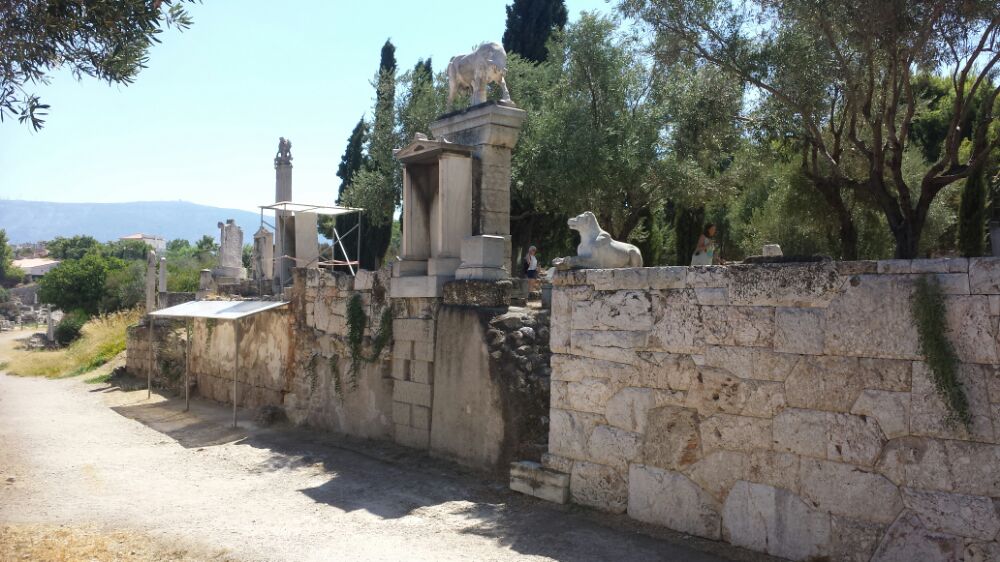
From Monastiraki market, walk towards Kerameikos metro, and you will soon find a pedestrian zone leading to Kerameikos ancient cemetery.
This site is very interesting, yet for some reason few tourists come here. If you visit Kerameikos cemetery, you will get a much better idea of the area that Ancient Athens used to occupy, and you will find out more information about the funerary rituals of ancient Athenians.
Find out more here about Kerameikos in Athens.
Lunch in Gazi area
Just a short walk away from Kerameikos cemetery, Gazi area is more popular for nightlife, but it also offers a few decent options for lunch in the area. You can try Kanella on Konstantinoupoleos street, or pretty much any restaurant on Dekeleon Street.
National Archaeological Museum of Greece
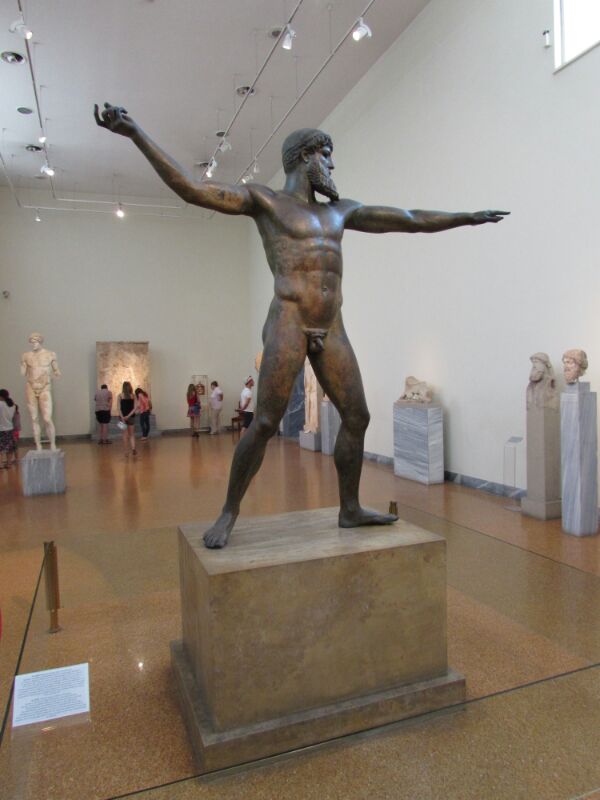
If you decide to visit the biggest museum in Greece, take a taxi from Gazi and be prepared to walk around a lot! The National Archaeological Museum is really fantastic, but you can’t really see it in one or two hours, unless you are interested in only a few specific rooms.
Allow a good four hours if you want to see everything, and take a break at the café downstairs. Personally, I think this is the best museum in Athens.
For more information on the museum’s highlights, check here – National Archaeological Museum.
Exarchia area

The National Museum is next to the infamous area of Exarchia. Sometimes called “the riot area”, Exarchia might strike you as a run-down place, but walking around you will soon realize that it is actually a vibrant and lively area, where lots of students go out for snacks or drinks.
It is worth walking around for a while, though it is much better to walk around with a local who can explain to you the sad history of Exarhia.
From the Polytechnic rising in 1973 to the death of 15-year-old Alexandros Grigoropoulos in 2008 and the subsequent riots in Athens, Exarchia is a pretty unique place.
If you are hungry, there are plenty of very affordable options, such as Oxo Nou, Rozalia or Vergina. If it is only small plates that you are after, an excellent option is Saliggaros on Solomou street.
Phew – we've got to the end of this Athens itinerary for three days! Want to stay longer? Check out this 4 day Athens itinerary
FAQ about spending 3 days in Athens
Some readers planning to visit Athens as part of their Greek vacation have questions similar to:
Is 3 days in Athens enough?
3 days is enough time to see the ancient sites and main attractions in the Greek capital Athens.
How do I get from Athens International Airport to Athens city center?
You can travel from Athens airport to the city center by bus, metro or taxi. The journey takes around one hour.
Do I need a rental car in Athens?
No, you do not need to hire a car to explore Athens. Most of the historical sites are clustered together within the city centre and are within walking distance. If you do need to use transport, the efficient metro system is the best way to get around Athens.
Where to stay in Athens?
If you've not decided where to stay yet, I've got a useful guide. It shows which areas are best, as well as a carefully selected list of hotels and apartments in Athens. Take a look here: Where to stay in Athens.
What are some good Day Trips from Athens?
Staying longer than three days in Athens? There's numerous Athens day trips you can choose from. The most popular of these are the Delphi day trip from Athens, and the three islands cruise to the nearby Saronic Islands. You can just about see the ancient monasteries of Meteora on a day trip, but be warned, it's a very long day!
- Delphi Day Trip from Athens
- 3 islands Day Cruise from Athens
- Mycenae and Epidaurus Day Trip from Athens
For a full guide on other day tours, take a look here – Day Trips from Athens.
Want a full Greece travel itinerary? Here's my guide to 7 days in Greece for first time visitors, and here's 10 ideas on itineraries for 10 days in Greece.
Please pin this Athens 3 Day Itinerary for later
Add this pin to your Athens travel board for later! You might also want to read my travel tips for traveling in Greece.
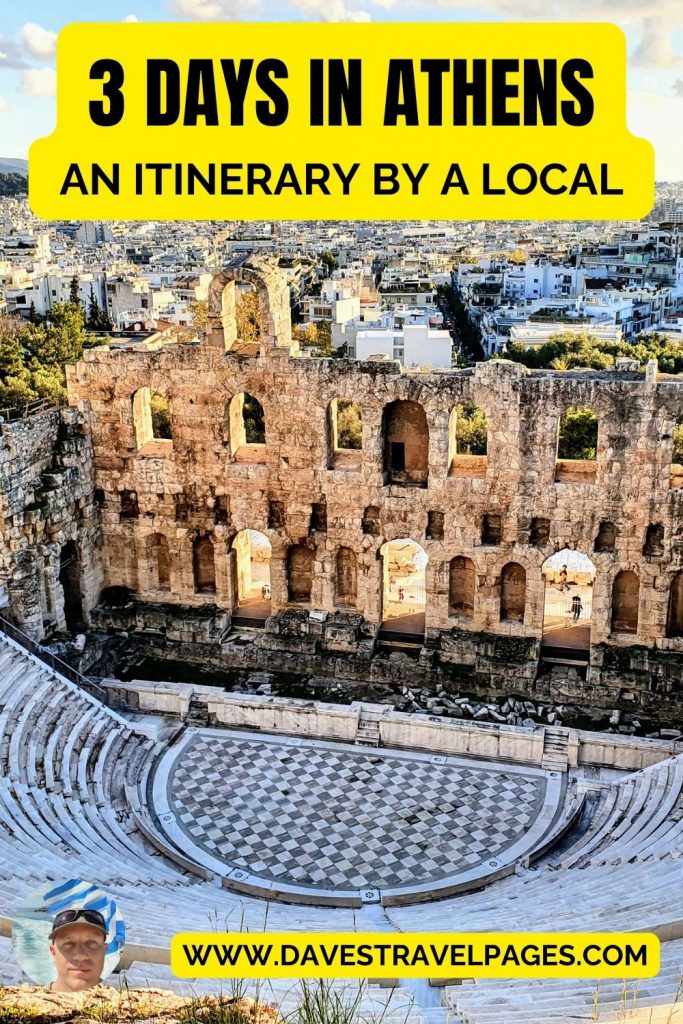
 – Dave Briggs
– Dave BriggsDave is a travel writer who writes about and lives in Greece. If you enjoyed this guide on what to do in Athens for 3 days, you might want to check out some of the other itineraries and insights about Greece on this website. Follow Dave on social media for travel inspiration from Greece and beyond:
hi dave thank you so much for posting your 3 day itinerary do you think it is necessary to have a guide for acropolis or is it ok to use guide bookwe will be in athens next week do i need to book combi ticket or get on the day before also wwhat is best way to get to pireaus port
thanks again Agnes
Hi Agnes,
Absolutely fine to use a guidebook – maybe better, because you will take your time more and not feel rushed by the pace of the guide.
The official site to pre-book tickets is here: https://etickets.tap.gr/
The site looks a bit dated, but it is genuine! Booking a couple of days ahead would be fine.
You can now take the metro directly from Syntagma Square to Piraeus port.
Keep in mind Piraeus Port is quite large. You might still need to walk some distance.
If you are taking a cruise, then you might find a taxi more convenient overall, as the cruise terminal is further from the metro station.
Here’s my guide to making the trip the other way around: Piraeus to Athens
Do you recommend the hop on hop bus. and if so, which is the best one.
I’d only really recommend it for people with mobility issues. Athens historic center is walkable, and it’s just easy to get around on foot.
can you buy the combination ticket for sites in athens on line?
Hi Valerie,
Yes you can. Info here on combo tickets and different options for seeing the ancient sites in Athens: Athens Combo Ticket
Thank you so much for the article helped me a lot for my plan
Is there a certain taxi service you suggest using while in Athens? Like do they have Uber or Lyft?
Hi,
I recommend using the Taxiplon app or Beat – Ride app – these are the two Greek ones, and are better than Uber or Lyft.
We spent 4 days in Athens and used your itinerary to plan our time. It couldn’t have been better!
Thank you for all your tips which made our trip as great as it was (especially the glass floors at the acropolis museum!!!!)
Would thoroughly recommend your page to anyone coming to Athens!!!
That’s started my week off with a big smile on my face!
Thanks for your kind words, and happy to hear that you enjoyed your trip to Athens.
All the best,
Dave
Hi!
Thanks for this REALLY usefull blog 🙂
Hi Dave
Your site is very helpful for my planned visit to Athens in April. When you suggest the activities for a particular day, how many hours do you think it is required? we tend to get up late in the morning, so may have to skip some of your suggestions if it takes 8 hours to visit them all.
Thanks
Peter
Hi Peter,
I’d say that my 2 day Athens itinerary is probably best for you. I have timings on there, and also it covers all the main sites at a nice easy pace.
Note: Currently, archaeological sites have winter opening hours, but you may be in luck with longer opening hours in April. So, you’ll need to check closer to the time in regards to when to visit the Acropolis for example.